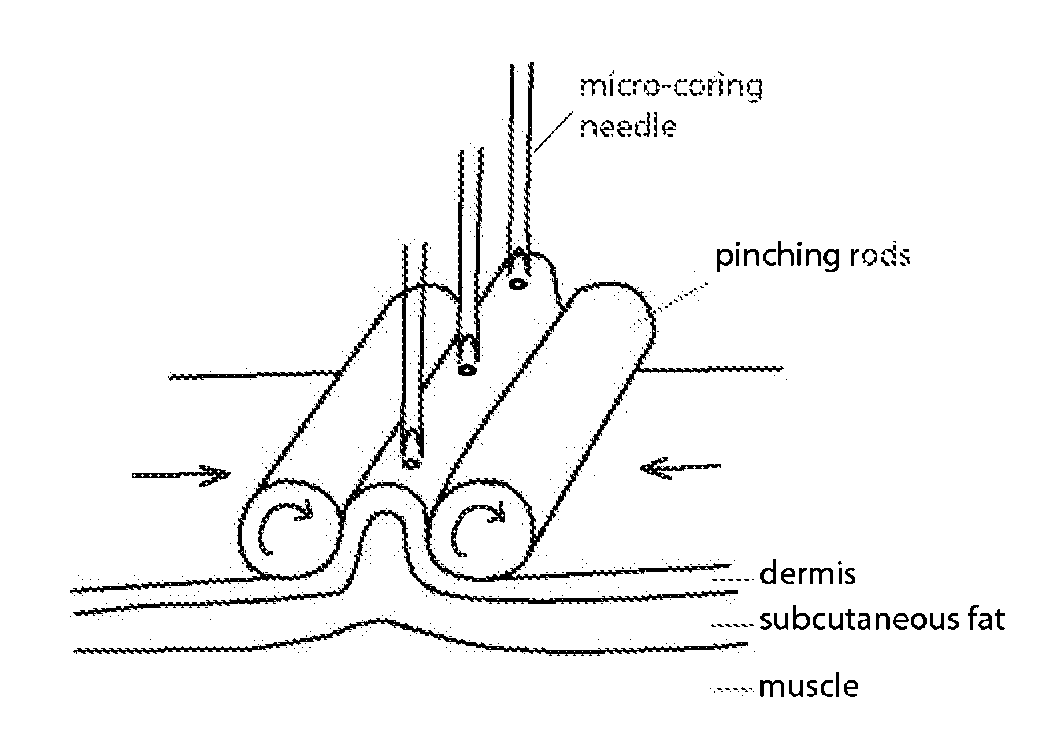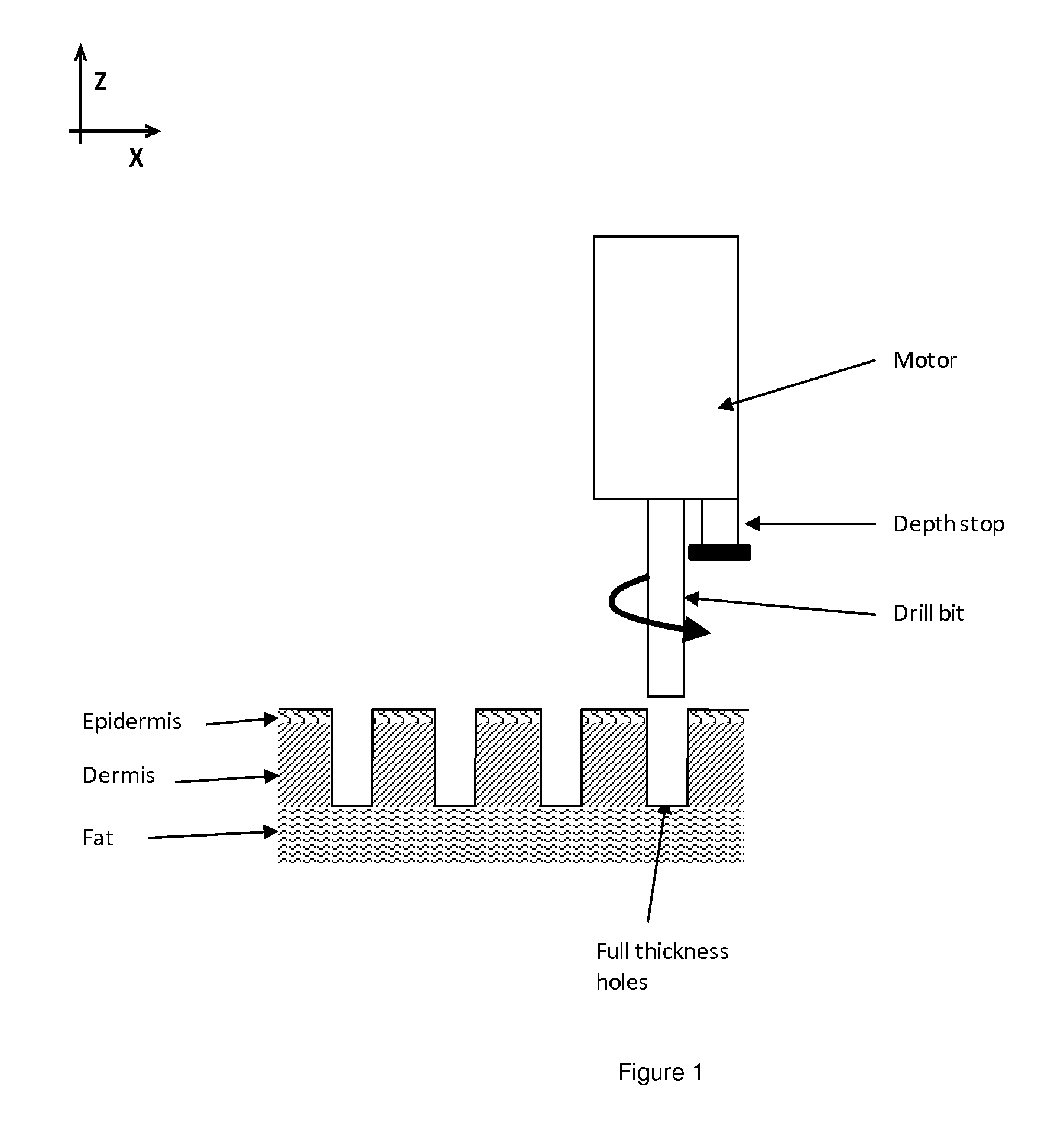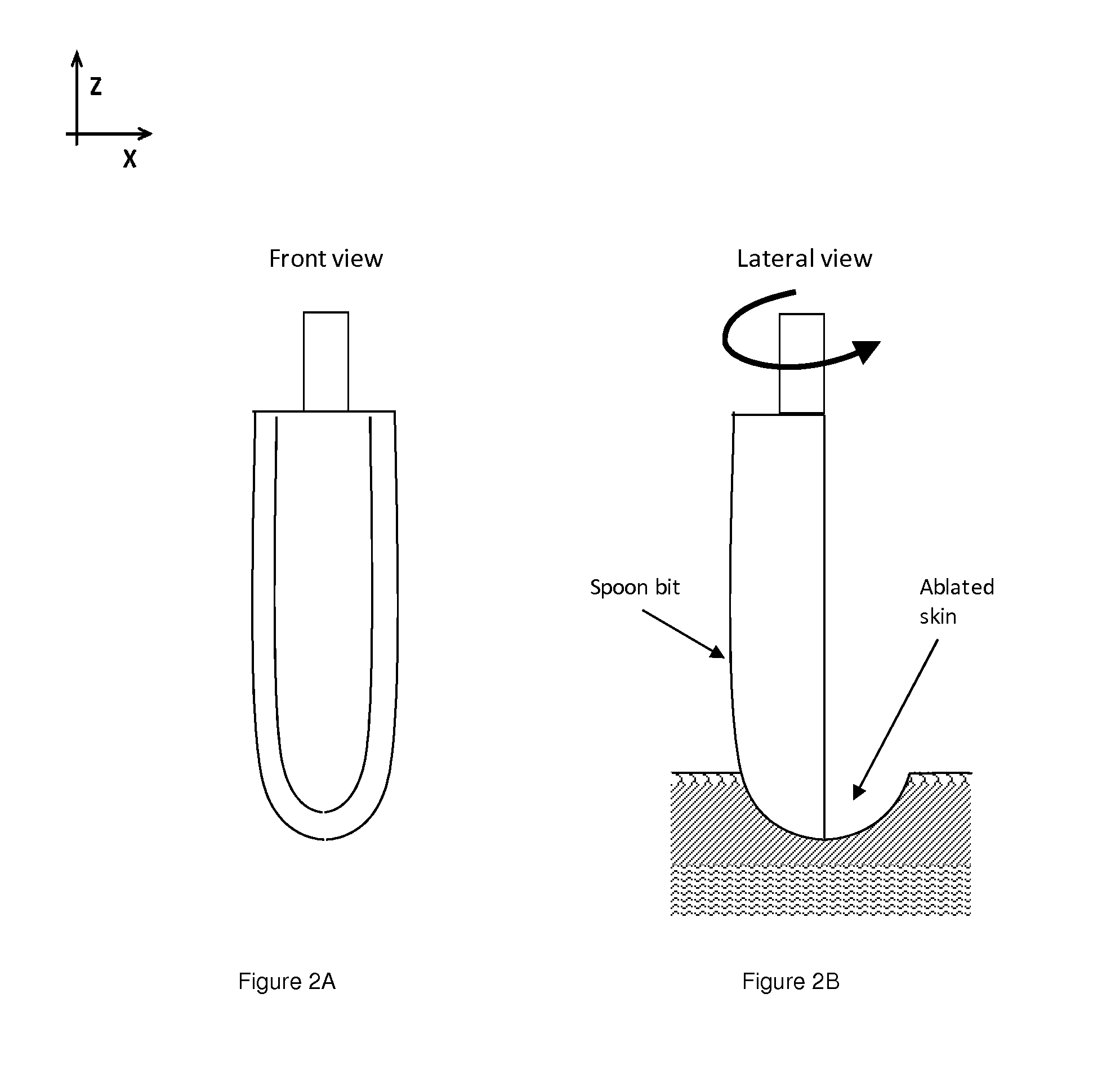Methods and apparatuses for skin treatment using non-thermal tissue ablation
- Summary
- Abstract
- Description
- Claims
- Application Information
AI Technical Summary
Benefits of technology
Problems solved by technology
Method used
Image
Examples
example 1
Drill Apparatus for Forming an Ablated Tissue Portion
[0249]An ablated tissue portion for the treatment of skin can be formed by mechanical means. For example, a drill equipped with a depth stop, a drill bit configured to remove tissue and having a diameter less than 1 mm, can be used to form an ablated tissue portion (FIG. 1). The drill is positioned over the skin region to be ablated. The drill bit is rotated using the drill motor to a rotational speed sufficient for the drill bit to incise the tissue (e.g., a drill rotational speed between about 50 to 2500 rpm, such as about 500 rpm or any ranges described herein). As the drill bit enters the tissue, the device is moved in the Z direction until the depth stop makes contact with the skin surface. The drill bit rotation can be reversed to remove the drill bit and complete the ablation to form an ablated tissue portion.
[0250]Many drill bit designs and materials can be used in the exemplary device and method. For example, a twist bit ...
example 2
Wire or Fiber Apparatus for Forming an Ablated Tissue Portion
[0251]The mechanical means for non-thermal ablation of tissue to form an ablated tissue portion can be a wire or a fiber attached to a rotating component. For example, a wire can be attached to a needle such that the wire creates an arc extending from the longitudinal axis of the needle (FIG. 3A). The wire can be attached to the needle adjacent to the needle tip and attached in a second location along the needle towards the proximal end of the needle (end attached to rotating component). In this configuration, the tip of the needle anchors itself into the tissue for ablation. The rotating component is activated and the wire rotates with the needle, sweeping out a volume of tissue as the wire turns. The rotational speed can be set to achieve the desired effect (e.g., slower rotation results in less aggressive ablation of tissue and faster rotation results in more aggressive ablation of tissue). The shape of the hole is dict...
example 3
Blade Apparatus for Forming an Ablated Tissue Portion
[0254]The mechanical means for ablation may include one or more blades. For example, an ablation apparatus can be formed by a square shaped tube having blades along the bottom edge of each wall of the square tube. In a further example, an array of square shaped tubes with blade edges (FIG. 4, an array of six square blades) having one or more square tubes separated by a distance configured to extract about 5-40% of the tissue area covered by the array (e.g., the sum of the area of all the square tubes is 5-40% of the total area covered by the array). The blades are pushed into the skin in the direction indicated by the arrow. Different hole patterns may be cut depending on the geometry and number of blades (e.g., a triangle, hexagon, or octagon). Blades may be inserted into the tissues with sufficient force and speed to produce a desired effect. The hole depth can be controlled by the depth of the blade or a stop feature on the app...
PUM
 Login to View More
Login to View More Abstract
Description
Claims
Application Information
 Login to View More
Login to View More - R&D
- Intellectual Property
- Life Sciences
- Materials
- Tech Scout
- Unparalleled Data Quality
- Higher Quality Content
- 60% Fewer Hallucinations
Browse by: Latest US Patents, China's latest patents, Technical Efficacy Thesaurus, Application Domain, Technology Topic, Popular Technical Reports.
© 2025 PatSnap. All rights reserved.Legal|Privacy policy|Modern Slavery Act Transparency Statement|Sitemap|About US| Contact US: help@patsnap.com



